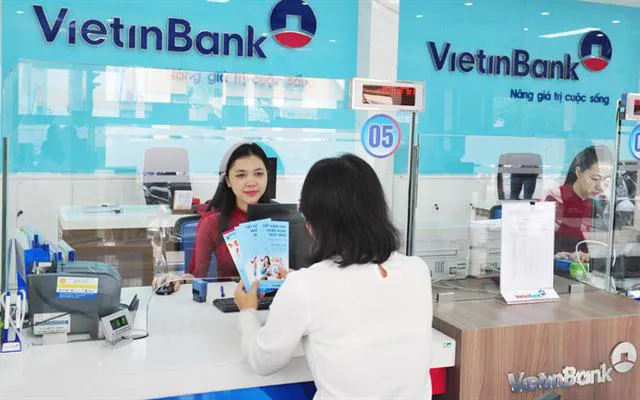Vietnam's credit growth expands nearly 13% in 2022
Banks' lending continues to be channeled into priority economic fields rather than high-risk ones, such as real estate or the stock market.
As of December 21, total outstanding loans in the economy hit VND11,780 trillion ($498 billion), representing an increase of 12.87% against late 2021, according to the Vice Governor of the State Bank of Vietnam (SBV) Dao Minh Tu.
| A customer at a Vietinbank branch in Hanoi. File photo |
"Banks' lending continues to be channeled into priority economic fields, rather than high-risk ones, such as real estate or the stock market," Tu said during the banking industry's year-end conference on Dec. 27.
For next year, Tu expected the SBV to maintain a cautious approach in managing fiscal and monetary policies to ensure an inflation rate of around 4.5% and keep economic fundamentals intact.
Echoing Tu’s view, the Director General of the SBV’s Monetary Policy Department Pham Chi Quang added the SBV’s main priority is to keep inflation in check, which is key to ensuring macroeconomic stability and the stable operation of the banking sector.
In 2022, Vietnam’s economy faced major headwinds during its recovery from the Covid-19 pandemic. The Russia – Ukraine conflict has led to high inflationary pressure across countries worldwide, prompting major central banks to reverse their stance on policy management.
Fed’s decision to raise its policy rates several times put the Dollar Index at its highest level in the last two decades. In this context, the USD/VND exchange rate has risen since late August.
“Vietnam can't buck the trend,” Quang said, referring to the local central bank’s move to raise the management rate for the first time in two years on September 22.
In mid-October, the SBV decided to widen the trading band of the USD/VND exchange rate from 3% to 5%, and the USD selling prices were raised for the third time in one month. In the free market, for the first time, the rate went up to VND25,000 per $1.
In late October, the SBV raised its policy rate for the second time in a year, and the interest rate cap was increased from 5% to 6%, around the level in the pre-Covid-19 period.
SBV Governor Nguyen Thi Hong, during a National Assembly session in late October, explained the foreign exchange market would have remained out of control had the interest rate remained unchanged, implying the central bank's need to stabilize the market as a short-term priority.
But a higher interest rate in the market resulted in a lack of liquidity in the economy, especially in the securities and real estate markets. The matter worsened as banks depleted their credit quota room assigned by the SBV since the middle of the year, forcing companies to look for loans outside the banking system with high-interest rates.
The SBV only expanded the credit room in early December by 1.5-2 percentage points, meaning around VND156-200 trillion ($6.5-8.3 billion) being injected into the economy.
“With all key economic objectives having been fulfilled, the SBV decided to expand the credit to meet the rising capital needs,” Tu from the SBV said.
“Inflation continues to be a key factor influencing the direction of the monetary policy in 2023,” Tu added.












